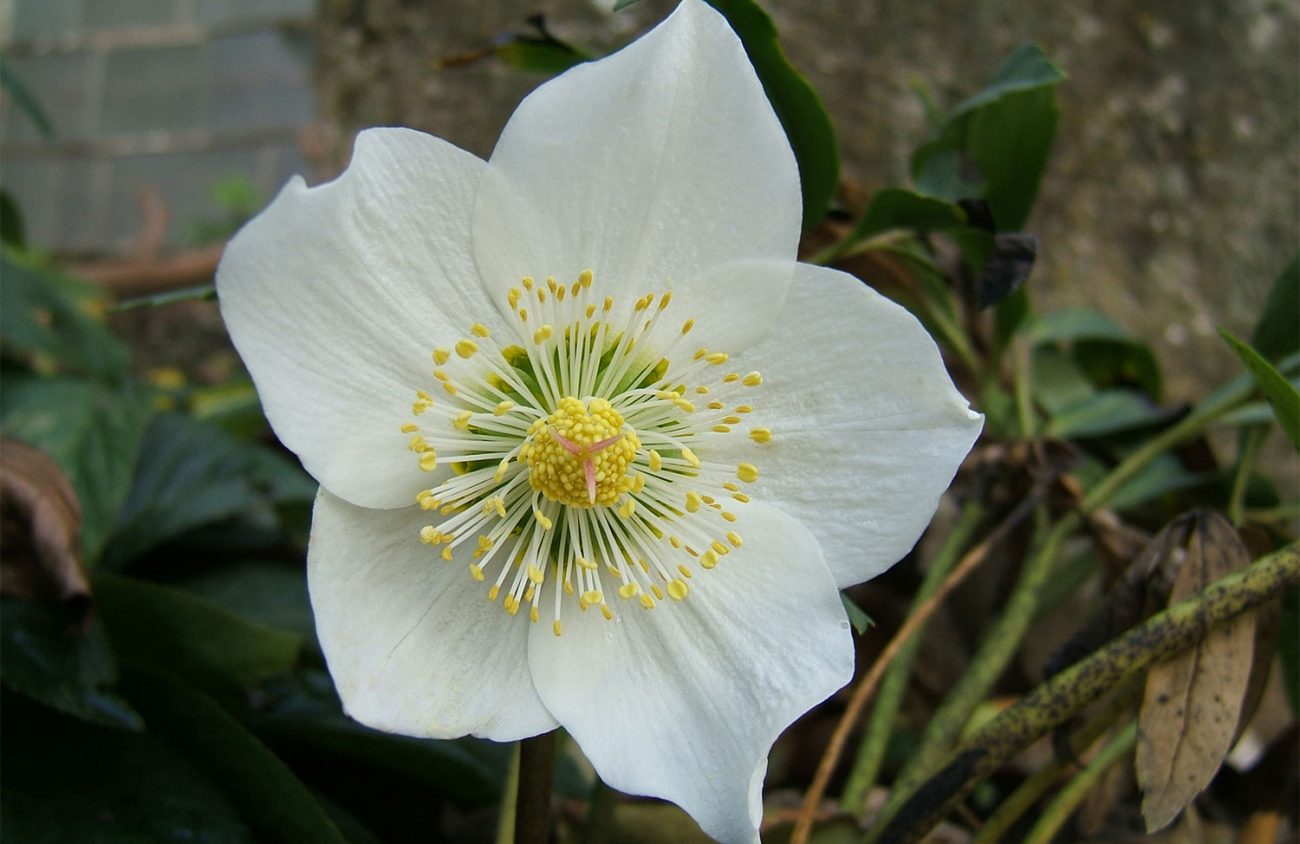If there are healthy honeybee hives in your neighborhood, you may spot the occasional intrepid worker bee venturing out on any sun-warmed afternoon as early as January. And new bumblebee queens emerge quite early in spring, even when the weather is cloudy and relatively cool. These bees are, of course, looking for nectar. Will they find it in your yard?
Shrubs that bloom in winter and early spring are invaluable, as are precocious bulbs like snowdrop and species crocus. Galanthus elwesii, sometimes called giant snowdrop, blooms in January. Other excellent plants for early-rising bees are the hellebores, especially the white-flowered, December-blooming Christmas rose (Helleborus niger) and the increasingly popular Lenten rose (H. x hybridus).
Let me list the virtues of Lenten roses. Their long-lasting flowers appear in January and stay attractive through April. Well-established plants sometimes throw up a few late, fresh flowers for bees to find. The big, handsome leaves are evergreen. Plants are long lived and rarely need feeding or dividing. Hellebores thrive in light to medium shade and are worth trying in quite heavy shade as well. Strong roots make them somewhat drought tolerant and competitive with tree roots and groundcovers. Deer do not eat them. Really!
I sometimes read that hellebores like a fertile, free-draining, humus-rich soil. What plant doesn’t? But while that may be what hellebores prefer, please don’t let such statements put you off planting them. I’ve grown Lenten roses in all sorts of soils, and although they may grow more slowly in less than perfect conditions, they still bloom well and bring me a lot of pleasure. The most important thing is to plant them where you will see and appreciate them often. Care is easy: Simply remove last year’s leaves as the flowers emerge, and cut off flowering stems in early May. They do repay regular moisture and an occasional compost mulch. Be sure not to mulch right over the crown, though. Hellebores hate that.
Not so long ago, Lenten roses bloomed in somber shades: drab whites that rapidly turned greenish, maroonish reds and muted, dusky pinks. Newer plants sport brighter, cleaner shades in a greater variety of colors: vivacious pinks and reds, intense blacks, pure apple-green, sparkling white, yellow and apricot. As a result, hellebores are becoming more popular and are easier to find. Credit for this revolution goes to industrious and passionate breeders such as Eugene’s own Marietta and Ernie O’Byrne of Northwest Garden Nursery.
Breeders like Marietta O’Byrne have made other improvements besides transforming the color palette. Marietta works on clarity of color, flower markings, foliage quality and disease resistance. They have also been bred for double and semi-double flowers, and plants that hold their flower heads a little more face-forward so you can see inside. The interiors are often nicely marked with spots and streaks.
Northwest Garden Nursery is a wholesale business, shipping Lenten roses far and wide under the trademark Winter Jewels. The O’Byrnes do not normally make retail sales, but they make an exception for a few days each year. In 2019, the nursery will be open on two consecutive Saturdays, Feb. 16 and 23. Blooming plants will be offered in gallon pots and larger. Check the website for details and directions (the nursery is west of Eugene, on Central Road). If you miss the nursery events, look for Winter Jewels hellebores in nearby garden centers.
If you visit the nursery on “hellebore days,” don’t forget to look around the garden, which is rewarding even in February. The O’Byrnes recently released a beautifully illustrated book about their garden and its history. A Tapestry Garden, published by Timber Press, includes a section on hellebores and the Winter Jewels breeding program.
Rachel Foster lives and gardens in Eugene. She can be reached at rfoster@efn.org.
